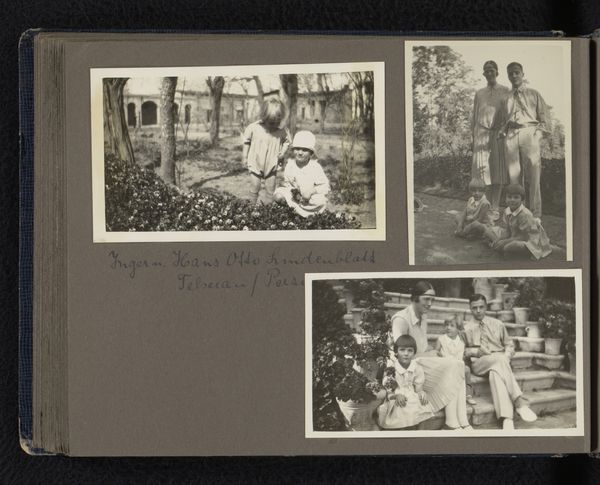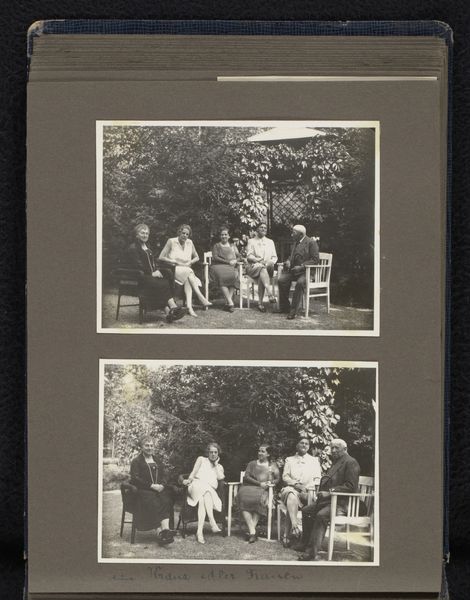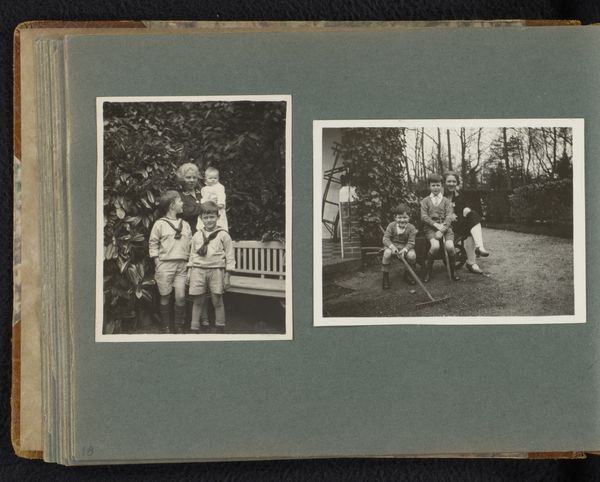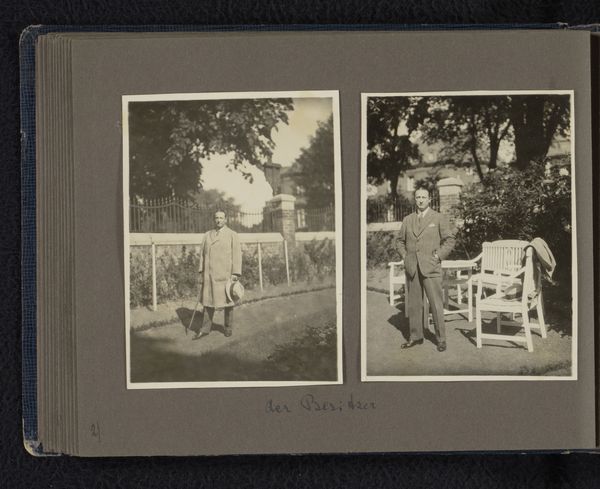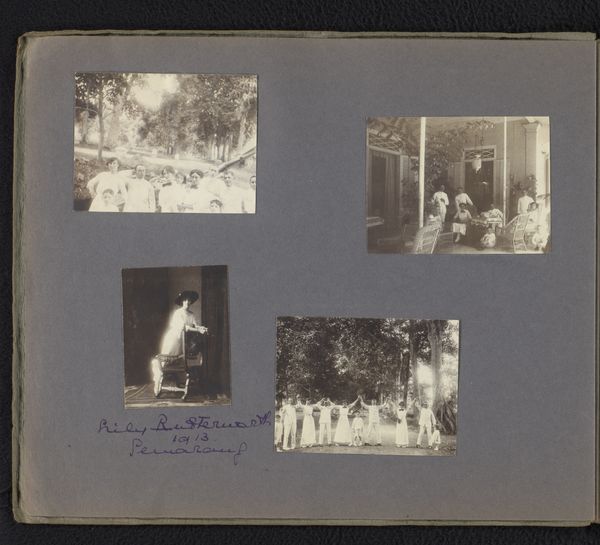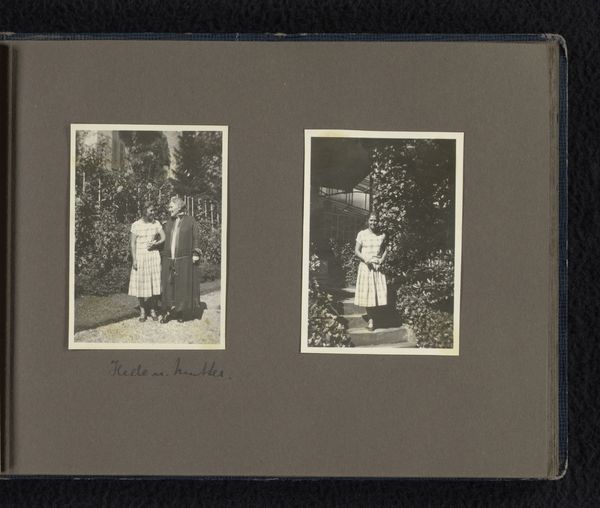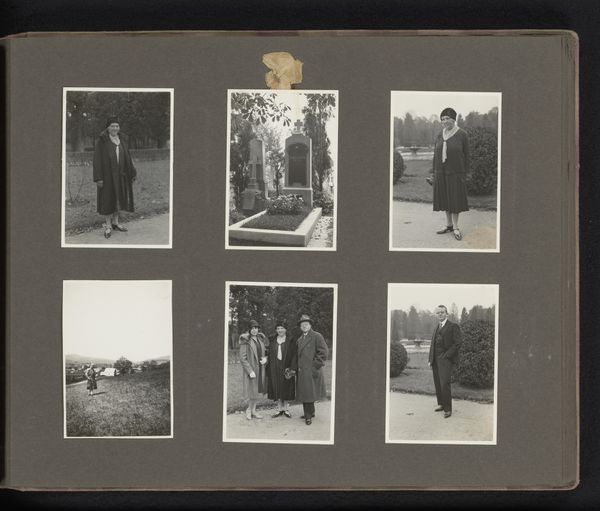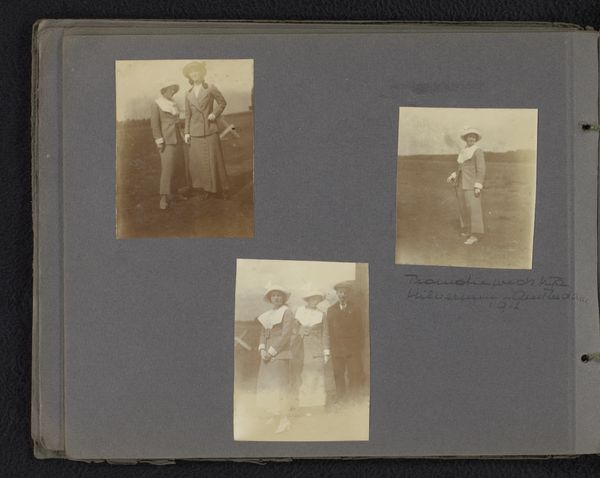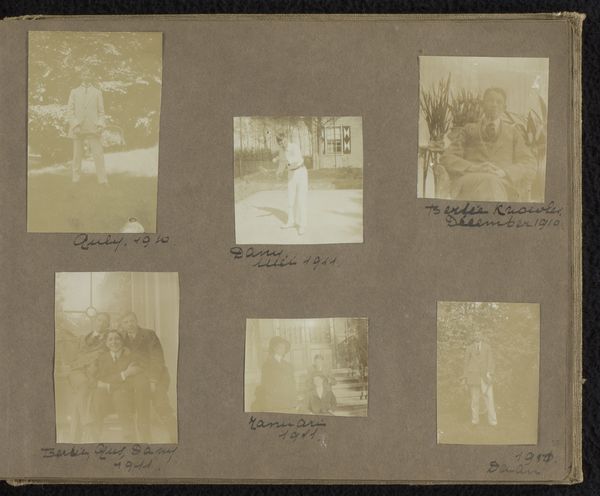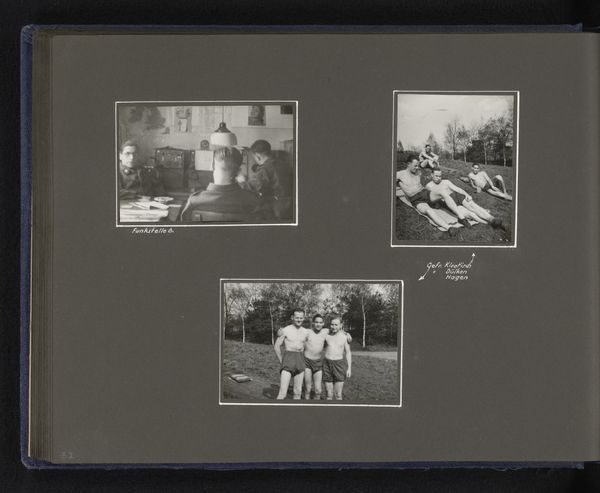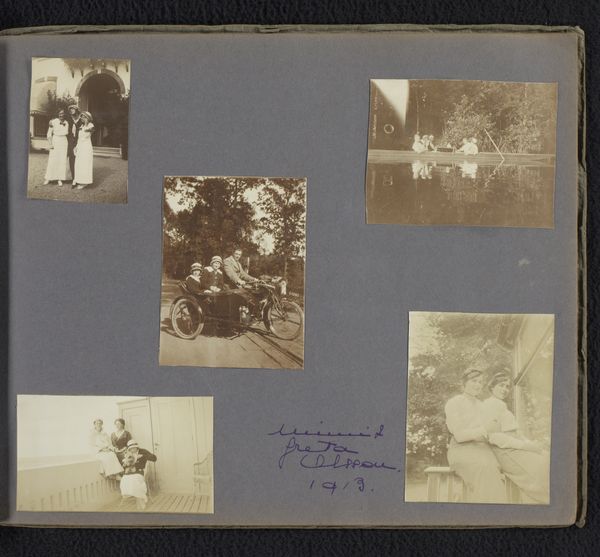
Kinderen van de familie Naumann, vermoedelijk na juli 1932, vermoedelijk in Albeck (Oostenrijk) 1932 - 1937
0:00
0:00
photography
#
portrait
#
aged paper
#
still-life-photography
#
homemade paper
#
paper non-digital material
#
paperlike
#
sketch book
#
personal journal design
#
paper texture
#
photography
#
personal sketchbook
#
group-portraits
#
folded paper
#
paper medium
#
modernism
Dimensions: height 85 mm, width 55 mm, height 164 mm, width 210 mm
Copyright: Rijks Museum: Open Domain
Curator: This photograph, likely from between 1932 and 1937, depicts "Kinderen van de familie Naumann," the children of the Naumann family. It's believed to have been taken in Albeck, Austria. Editor: The mood that immediately strikes me is quietude, almost melancholic. There's something so contained about these three snapshots tucked within the aged paper of a photo album, like hushed memories longing to be released. Curator: Note the presentation, the "paper medium", which has clearly aged. These weren’t simply photos produced for individual display; the production here involves selection, arrangement, and perhaps an intention related to archiving family memory itself, through the physical act of placement and collection. Editor: Absolutely. They're little worlds, each a meticulously composed scene with a quiet theatricality. Look at the placement of the children on those stairs, or gathered together with such studied, earnest expressions. It feels like more than mere documentation; it’s a posed story waiting to unfold. Curator: Right, it speaks volumes about middle-class aspirations and values during this era. The children's clothing, the settings—they all communicate social standing. And consider the labour involved in maintaining these material objects, especially in the interwar period, to affirm and consolidate this class identity. Editor: And yet, even in their careful staging, there's an undeniable vulnerability. The images possess a softness—that paperlike quality—that seems to acknowledge the ephemerality of it all. Time moves, childhood fades... it almost physically aches to touch them. Curator: I see it. The artist’s choices show intent to record these markers and indicators, using readily available resources as a form of family memorialisation, but ultimately creating what we now appreciate as both art and a reflection on social mores and visual economy. Editor: What I feel most when gazing at these faded snapshots is an aching nostalgia, not even for a past I lived, but for a connection to these other lives, carefully curated. These forgotten Naumann children remind us of our collective history, those threads that weave through every human experience.
Comments
No comments
Be the first to comment and join the conversation on the ultimate creative platform.
